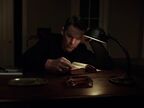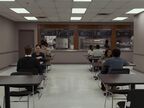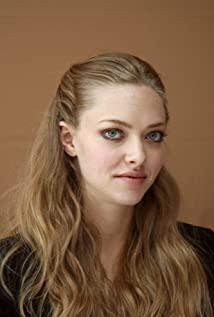Yuli Appreciation is Yuli’s gratitude. Thanks to the Yuli projectionists for coming to the Yuli screening room for a year to share the film, and thank you to everyone who came to Yuli to watch and discuss the film. At the same time, this article focuses on thanking these Yuli's outstanding works of art during the year. We got together because of the works of art. Thank you for loving art, and art itself!
Unlike previous years, this time I want to use the form of "notes" to try to cover most of Yuli's photographed images through brief thoughts, in an attempt to achieve a certain kind of democracy, a certain kind of ideal state of imagery. These thoughts are all based on personal aesthetic experience. The focus will be on the movies that I care more about, and the thoughts sometimes involve recent popular movies, and at the same time some movies are ignored. Because there is a bad habit of watching the movie only once, there are some inaccuracies in the memory, and I hope to correct it.
All works in the 2018 Yuli screening room
"First Reformed Church" "Rome" "Wild Boys" "Roadside Picnic" "Super New Testament" "Zama" "Pluto Hour" "Dream Requiem" "Rubber Head" "Death Proof" " "Long Live Love", "Private Buyers", "The Pastoral Festival of the Dead", "Waiting Alone", "Hometown", "Children of the Rivers and Lakes" "Happy Lazaro", "Happy", "Love in Hiroshima" "Genetic Doom" "A River of Love" " Midsummer, "The Mystery of Caspar Hauser", "The Thief Family", "Da Vinci Genius", "98 Wave", "Uma", "Wild Tide", "The Tiger of 142B", "The Taste of Rice Flower", "Ismay" "The Ghost of Ill" " Sigismund with No Image" "Burning" "Training" "Green Tea" "Nobody Knows" "Buying a Murder and Shooting People" "The Scorching Sun" "Muholland Road" "The Kingdom of God" "Happy New Year", "Blood Guanyin", "X Shengzhi", "Thun Shisan Lang" "Phantom Sewer" "Sea Master " "Four Springs" "Bruno Sculpture Exhibition-Zhejiang Art Museum"
* Bold represents personal preference
Power of image
1. It is undeniable that if we follow the format of last year's "Yu Li Rewards", I will reward the whole year of 2018 to " First Reformed Church" and " Rising in Love". Both films have passed their own formats. The harmony of various forces: the organic, complementary and harmonious advancement of form and content, simply put: 1+1>2
2. " The Mu love" on head, fixed to the lens Abbas indoor space, and the image is not established within the lens body, but a pan objectification process. The voice of the subject of the image talking on the phone cannot be aligned within the image. Then the audience realizes that the subject, like the audience, faces this space, that is to say, the subject is visually painted, but the sound is present. In other words, before the painting (the audience position) is also covered by the director's skills, plus there are people speaking outside the painting on the left and right frames, as well as the in-depth movement of the characters. As a result, this fixed camera seems to be fixed. In fact, the space around the flat screen has been established, and it also covers the front and back of the mirror, so the space is opened infinitely (before painting, after painting, and around the frame).
For this reason, Abbas suggested a kind of incompetence of the lens-obviously this lens is only a single perspective of real space, characters, spaces, and events are not closed by the lens. This is a limitation of the lens. Immediately afterwards, Abbas provided a reflex shot of the interior of the space, so the limitations of the interior space were also prompted, which is the limitation of the enclosed interior space...So, the image formal grammar was established. Inside the film, Abbas made great use of this sense of space and lens limitations to write images, such as the enclosed and crisis inside the car, such as the city scene reflected from the outside of the car, and the power of the car's paralysis... the end of the film, when The enclosed interior space is broken by bricks, and the sense of crisis within the space has been unduly emphasized, which is similar to the reorganization of the “perceptual distribution” of Lancière. The image has reached the complementarity of form and content.
3. " First Reformed Meeting" is similar to "Ru Mu Ai He", but also uses the limitations of the lens, but provides another way of expression. When the film frame is blocked and cut off on the left and right; it corresponds to the male protagonist lying flat on the floor being pressed by the female protagonist with both hands (left and right), and pinned to the floor; corresponds to the hands of Jesus nailed to the cross; it also derives from the picture The restraint of the audience outside. What a scene of the crucifixion of Jesus.
The male protagonist nailed to the floor overlooks the earth through surreal images, which is a symbolic replacement of the savior based on the role. He is caring for the lower space, and the male protagonist is lying flat on the floor, or it can be understood that he is caring for the depths. Space; and the monologue diary of the male protagonist, on the one hand, is a confession to God, on the other hand, this confession is also directly conveyed to the audience before the painting, which means that both the upper part of the painting and the front of the painting are opened. As a result, the left and right are fixed, and the up and down and front and back are stretched, like a cross. And this fixed and extended form of the cross serves the plot and makes the plot more contagious. When the protagonist is burdened with thorns, because of the restriction and fixation of the left and right, this tingling sensation seems to penetrate the image and directly impose it. In the audience, the audience is forced to watch, to appreciate the natural pain, and you cannot escape. This is what the image imposes on the body.
4. The physicality of images, based on last year's experience, can point to two dimensions.
First of all, the images provided by the "First Reformed Society" refer to the external body-physical nature, which mainly refers to the relationship between the image and the audience; the continuation of the "First Reformed Society" can also be processed into another In this form, image creators can automatically isolate this physicality of "empathy and pain" in order to enter metaphysical dualistic thinking. For example, in "You've Never Been Here" , the movie uses drugs to isolate the body from perception, suggesting that a body is never present. This is for the audience. The image does not originally provide a real body, and the body in the image is a virtual image. But the image can provide the perception of the body, it is invisible but sensible. When modernism was prompted by Nietzsche, it began to doubt the authority of God, so that under the guidance of Flaubert, modern novels led the characters to the incompetence of atonement, and began to question God or even make God disappear. The image has taken over the task of reshaping faith, and this reshaping of faith is directed to the body through vision, so when the body is also rejected? Why do people stand in the world? "You have never been here" provides a metaphysical answer: due to spiritual connection, even if it is fragile, this is a new belief.
Of course, there can be another way, he appears in another dimension of the physicality of the image-ontology. Starting from the phenomenon of motion, Deleuze realized that image motion does not rely on other media, it is an unattached free motion; at the same time, image motion does not rely on spiritual supply like static painting, it is a kind of "self". -Motion", so the image is not concrete or abstract in principle. Therefore, the image itself has the premise of physicality. Kurosawa understands this, and the movement, characters, and plot of each medium in "Tsubaki Jujuro" are mutually expressive and organically strengthened. "Wild Boys" obviously continues this expression of movement. When heterogeneous movements such as light, wind, fog, fire, water, dreams, etc. are mixed in the same image machine, it points to the self-sufficient form of the image, and the image becomes an expression of its own. So before the film, the director can let the image loosely move itself under the condition of blurred ideology, it becomes fleshy. As time goes by, the ideology of the text slowly emerges, and the text and images gradually become unified. At the same time, with the revealing of the text, the audience can continue to trace the body of the image through the established text to achieve an organic form of image and text.
5. Borrow the rhetoric of a teacher's evaluation of the lens of "Elephant Sitting on the Floor". The editing of " You Have Never Been Here" has a "stroke".
Historical image
1. History is divided into several types. The first is history in capitals, which is determined by the law of the jungle, which is controlled by the winners. Undoubtedly, this kind of history is easy to be misled. Then there is history in lowercases, which are proletarian intellectuals (with the ability to speak). ) Instead of writing by the proletariat, it includes oral history, epilepsy history (Foucault), etc., but obviously the proletariat is still in a state of dumb speech; there is also a history of images, which is the visual presentation of the painter’s brushstrokes: Classical painting relies on religion and The law of power, which is actually subject to the "Poetics (Aristotle)" rules, is capitalized. Although Baroque painting also involves folklore, folklore painting still retains secular rules and does not present a democratic state. Modernist painting is relatively free, but it also inevitably has a certain "floor (Deleuze)" and a fixed "perceptual distribution (Lancière)". It is by no means democratic; and only the history written by images can There is a real possibility of democracy, because the camera serves both in front of and behind the mirror and is dually enslaved. This duality determines the possibility of "fracture" in the image, and the real overall situation will flow out of this "fracture" gap. Images, the proletariat can use this to make a sound. Therefore, Lancière concluded that only images have true democracy—"Communism of Images"
2. While not all images have history, the way in which images have history, Rancière guides two paths.
The first way is to limit the selective power behind the camera lens to suppress the power of the "bottom plate" and allow the lens holder to surrender control. For example , in the method of "Rome" , a "non-human" perspective is chosen in the film, as if the person in charge of the lens is a machine—just like a monitor. The images captured in this way maintain a certain relative relationship between the various objects. Democracy, the audience needs to discover the internal elements of the image and organize them by themselves. This method is obviously closer to the real experience. Even if the inside of the image is still arranged, it will be more real to the audience's perception. This is the way to change the "perceptual distribution" model to seek truth.
Here we must distinguish between poetic images. This abandonment of the right to hold a mirror is different from the "free indirect speech" model of poetic images like "Roadside Picnic". "Free indirect body" and "inhuman perspective" have similar appearances, but there are essential differences. "Free indirect body" refers to the autonomy of the camera; and "inhuman perspective" is to give up the autonomy of the camera. This is exactly why "Pluto Moment" gives people a sense of poetry, but "Rome" does not have a strong poetic flavor. "Rome" actually points to precision, just like the precise trajectory of a babysitter's movement due to restricted behavior.
The second way is suggested by Godard's "Film History". Because the traditional "movement-image" is usually subordinated to Aristotle's six principles of tragedy, this "poetics" principle is transcendent in nature, it has a clear plot and cause and effect. The real historical image does not have transcendence, so Godard liberated the partial image from the transcendental controlled causal image by re-assembling the image. This liberation reminds the duality of the camera and the resulting "fracture". And this "fracture" can also release the global image, allow the proletariat to end the state of dumb speech, and reveal the true history in this rift. At the same time Godard is also deeply aware that the ideographic function of images is far more efficient than text (which requires semiotic transformation). Then, text can be turned into a book, why can't images be turned into a book? The "book" with images in a book will obviously cover more content, and even through the combination of historical images, the proletariat can really speak out. This is the true mission of the image—the communism of the image! This is why it is: "Video Socialism", "Goodbye Language", and "The Book of Images" .
3. There may also be a simple history. This kind of history does not focus too much on the proletariat, but it still reflects the historical form of a period of time. This kind of history is covered in most excellent films, such as the immigration problem reflected in "Happy Lazaro", and the feminist form implied by "Wild Boys". These works are essentially political and historical. These histories are hidden in the power of film bonding, and these ideologies contain staged history.
Like the movie format
1. At the beginning of last year, I boasted that if I only watch one movie in the whole year, I would only watch "The Phantom of the Seamstress". Although it is ostentatious, "The Phantom of the Seamstress" can afford it. Opheles invented the "Baroque image" and derived various variations, such as "Pleasure", although not as large as "Laura Montes", but it is the most personal favorite of Opheles. Through three independent stories of progressive relationships, the film brings the audience into a kind of realism (sensible) through the gradual reminder (invisible) of the image abstraction itself, and this reality is even more real than reality. This is the image. The charm of form. PTA continues Opheles. In "The Phantom Sewing" , the audience is imported into the image by direct invitation to the audience, and then by transferring the role's image control rights, the image navigation rights are replaced, and the " Similar to "Happiness", the film has undergone three changes in the navigation rights, bringing the audience into a deeply enchanting illusion, so that the need for "moral justification" is eliminated. The audience actually accepts and agrees with the "perversion" in the director's arrangement. Love". This method can also be compared with "Warmness contains light". The progressive relationship of abstraction levels to allow abstraction to replace reality. This transformation technique belongs to "post-imaging painting".
2. "The Pastoral Ceremony of the Dead" is also a Baroque model, but the opposite is done. The director set up a progressive relationship in which abstraction disappeared, first showing absolute abstraction, and then as the abstraction gradually peeled off, pushing the film situation into the equality of reality and image, so the audience was also deceived. I think the reality at the end of the film is absolutely true.
3. "Guessing the Train" also sets three levels of identity through the control and transfer of the color tone of the image, which is also the Baroque invented by Opheles. As for "The Thief Family", the most outstanding attribute is that it combines the "Baroque structure" and the "Classicist situation" at the same time. This is the first time that Hirokazu has used Baroque. And because it is Hirokazu Zhi's classicist skills that have already reached its peak, such as "Nobody Knows" and "Deeper than the Sea", this emphasis on Baroque may be a signal, and Zhi Zhi seems to have begun to introspect.
Image other
1. "The Ghost of Ismail" is the different ways of viewing perspective skills between the north and the south of the classicism of painting (indicated by two paintings in the movie). The two forms of classicism are discussed in depth in the movie. And glued together with the plot. In other words, although the surface is a baroque nested structure, it is actually writing images through painting techniques. So, what if you don’t understand classicist painting? Then treat it as purely Baroque.
2. The same goes for " Private Buyers" , when art is eager to break free from "imitation theory" and introduce "abstraction". How does art history think? "Private Buyer" provides a complete answer sheet. So there is still a premise here, the premise is to understand the history of art, especially the history of abstract painting. This should be the pride of intellectualism.
3. The series of "weird" plot settings in "Sigismund without Image" actually explain the post-modern image philosophy. This is a essay image. If you want to see exactly, you must first understand postmodern philosophy. This kind of essay-style video is too proud. But sometimes this kind of pride can also reduce the attitude. For example, in Scott’s commercial films, such as " Wild Children" , when the children are ordered by the captain to become part of the ship and become the screws of the ship’s machinery, can the audience think of Marxism? What about the relationship between capitalism and the proletariat implied by philosophy? Since it is just a screw and does not have the ability to control a machine, even if the capitalists are eliminated by "stand up", the children still cannot drive a ship. Then when the capitalist (captain) enters the surreal island, why should he surrender to the information master "professor"? This obviously implies the post-Marxist era of the information society. Owners of information technology can ride on the heads of capitalists...Even if they can't get to this deep, the image itself can still produce "aesthetic pleasure". The audience only needs to feel the image itself, and the image is close to the people.
Moral image
1. The morality of artworks has nothing to do with the content of "speaking", but with the form of "speaking". Because the perception caused by artwork is indirect. The experience provided by art relies on the collusion of the experience subject, and art is a temptation. For example, pornographic images, pornographic films will lead perception to physical impulses through form, while artistic images lead erotic impulses to spiritual experience. The two should be clearly distinguished. In addition, art is related to morality, because art can bring "moral pleasure". Therefore, those who think that Grandpa in " What is Page" shouldn't call and criticize in the theater is obviously a problem of the experience subject.
2. But it should also be realized that "What is Page" and Jia Zhangke's "A Barrel" are essentially advertisements. For example, Jia Zhangke 's approach in " A Barrel" evokes some linear logical points by loosely presenting them. Experiencing the subject’s fragmented experience, even through fragmented photos to provide the possibility of in-depth reading, to expand the experience group, and all fragmented images are glued through the ideology of "coming home during the Chinese New Year", which is a typical feature of advertising . Just like "no gifts for this year's holidays, only melatonin", as long as it is accompanied by an image of a silver-haired old man, no matter what the old people are doing.
3. As for "The Wandering Earth", it is not difficult for a slightly cognizant audience to find that there are actually many logical doubts in the film, but these are not important. The important thing is that the familiar iconic buildings around are frozen. This is The confirmation of "was here" or "will be here" is a double confirmation of time and space. And this kind of confirmation is because the viewer’s “safety distance” triggers “aesthetic pleasure”, and the plot almost completely relies on the bonding of “ideology”. This is a great ideology. Moral pleasure established by the high point of consciousness that takes human survival as its own responsibility. And this kind of ideology is spread in the "Wolf Warrior" style, and we can think that this way of spreading "moral pleasure" is unethical. This is using "popular culture" to spread "ideology."
4. Does the "absence of the otherness " of the video recorder in " Four Springs" similar to family video touch the suspicion of moral issues? Obviously, even if you touch morality, it is your own "personal morality", and we believe that morality is based on the relationship between the work of art and the subject of experience. Experience the restraint of the recorder when shooting funerals. That kind of restraint is morality itself.
5. When dealing with " The Last Night on Earth" , Director Bi Gan almost remakes "Roadside Picnic", visually belonging to the plus version of the latter, but the core and structure are almost the same, so the two movies have the same advantages and disadvantages , Even if the intentional shaking animation surface is changed to a 3D effect. The same problem encountered by the two films is the emphasis on dreams. Under Freud’s coffin-like trial, dreams are now beginning to point to the only explanation, that is to say, the direction of dreams is too clear. It provides The answer is accurate, so even if the image processing is loosely processed, the viewer's perception is the only thing that can be seen. This looseness is false and the illusion of a long shot.
6. Long shots can easily lead to ethical issues. The long shot is not simple, it means that the time of the image author’s expression coincides with the audience’s current time, so the audience will inevitably have a feeling of time being violated. Even a clear audience will feel overwhelmed, which is tantamount to giving the creator a kind of Nazi-style political scheduling power, which touches the patience and self-esteem of the viewer. Therefore, long lenses are generally used to democratize the subject. The scenes shot by excellent long lenses are often heterogeneous, and the audience has the right to choose their own viewpoints. For example , the famous long lens in Tarkovsky's " Stalker" actually expresses "material inertia" while also expressing its meaning through the loose medium that appears inside the image. And what about the copy from "The Last Night on Earth"? It is selected and imposed on the viewer's point of view. This kind of long shot is a moral violation.
7. Under the sensitive system, the review and release of " I'm Not the God of Medicine" actually hides a strange moral phenomenon. Although ideological processing is also used in the movie, such as when images cover patients on the screen, this accumulation of numbers actually provides the possibility of quantitative change, because the number can change the way the audience perceives the system (compared to , The number in "The Great Wall" is just the number itself). But the excellence of "I'm Not the God of Medicine" lies in the fact that the video guides this kind of behavior against the system to private individuals in a roundabout way, that is to say, for illegal acts, these are the civilian hero Xu Zheng in the screen image. Self-determination, not a revolutionary public decision by the proletariat. And this individual was also judged by law and reason. At the same time, Xu Zheng’s social image is by no means an ordinary actor. He is also a director and producer. In other words, Xu Zheng is a complete image controller, so his consumer image is absolutely capable of bearing the guilt of the image, and he has the responsibility to bear both inside and outside the movie. The ability to make personal decisions. Compared with the power of the masses, the power of the individual appears insignificant and is not enough to contend with the system.
8. Because of this, Jia Zhangke chose many directors when choosing the role for "The Children of the Rivers and Lakes" . Due to the particularity of Zhao Tao's social attributes, she is the director's wife and she is the closest to the image creator. She could have afforded the role of the coordinator of the video, such as Kim Min Hee's position in Hong Sang Su's work. However, Zhao Tao's role in the script of "Jian Hu's Daughter" needs to be treated as a weak one. To make the powerful Zhao Tao weaker, he must rely on the real image coordinator. So the director invited a group of directors to play supporting roles. So Zhang Yi, who was able to easily deceive the actor attribute after Zhao Tao’s failure, appeared in the video, was exposed by the director’s attribute Zhang Yibai, and the real deceived Zhao Tao willingly was Xu Zheng, who had both director and actor attributes. Only in front of these people can Zhao Tao become weak and the image can be established.
Poetic image
1. When reading novels, readers integrate themselves into specific roles; in poetry, we merge with the language itself; when watching movies, the characters merge into us by themselves; while poetic images integrate the audience and the language of the images, It also allows the situation to surround the viewer, and truly brings the viewer into the image and language itself. Let the viewer and the image itself coexist, empathize, and live together.
2. So the establishment of poetic images, Pasolini concluded: free indirect speech. Only when the director guides the viewer to freely shuttle in the image space, guides the viewer and the character to appreciate time together, and integrates the image ontology and the viewer, can the poetic image be truly established. From this perspective, "The Last Night on Earth" seems to be weaker than "Roadside Picnic", at least the viewers are more free in "Roadside Picnic". However, the reminder of the dream clearly destroys the viewer's freedom decisively, and this freedom is false.
3. But for " Pluto Moment" , we can understand urban space and mountain space as space-time that cares for each other (like "Tropical Diseases"). For example, it can be assumed that mountain space is a dream. Of course, Director Zhang Ming clearly understands the direction of the dream. Sex is too precise, so he blurs dreams and reality, so the viewer can roam freely in the "free indirect body" of the image, and even the viewer can "moon and rain" with the character, allowing the viewer and the character to empathize at the same time . As the space deepens, the director keeps handing over viewpoints. This group-like handover of perspectives just provides space for the audience to appreciate the emotions of different characters. The surrounding space scene, like Giorgione's painting, is poetic.
Personal Choice of New Films in 2018
"The First Reformed Church"
"You have never been here"
"Rome"
The Phantom of the Seamstress
"Wild Boys"
"Zama"
"Happy Lazzaro"
"Pluto Moment"
2018 is like a shadow: "Phantom Sewing", "Milan", "Night of Kabilia", "Scorching Sun", "Muholland Road", "Nobody Knows", "A River of Love", "Love in Hiroshima", "Burning", " "The Ghost of Ismail", "The Taste of Rice Flower", "Zama", "Pleasure", "Happy Lazaro", "The Pastoral Festival of the Dead", "Private Purchaser", "Long Live Love", "Pluto Moment", "Wild Boys" "Rome," "first Reformed Church," "you're never here" "warm containing light"
2018 Yuli Writing Summary
About the gossip about "Miyang", check for omissions~
"Symphony of Beauty" —001—
Symphony of Beauty—002—
About the baroque structure of the film, about Manet, about "The Phantom of the Seamstress"
About "musicality"
Talking about "The Ghost of Ismail"-"Hamlet Style"
Talking about "The Taste of Rice Flower"-a new domestic video
The "thorn point" in "Happy Lazaro" (and the position of Zhao Tao in "The Children of the Rivers and Lakes")
The Power Mechanism of the Images of Jia Zhangke's "Jianghu Daughter"
The production mechanism of "classicism situation"
"Long Live Love" and "Postmodernism"
The 2018 Chinese film "Pluto Moment"
View more about First Reformed reviews











